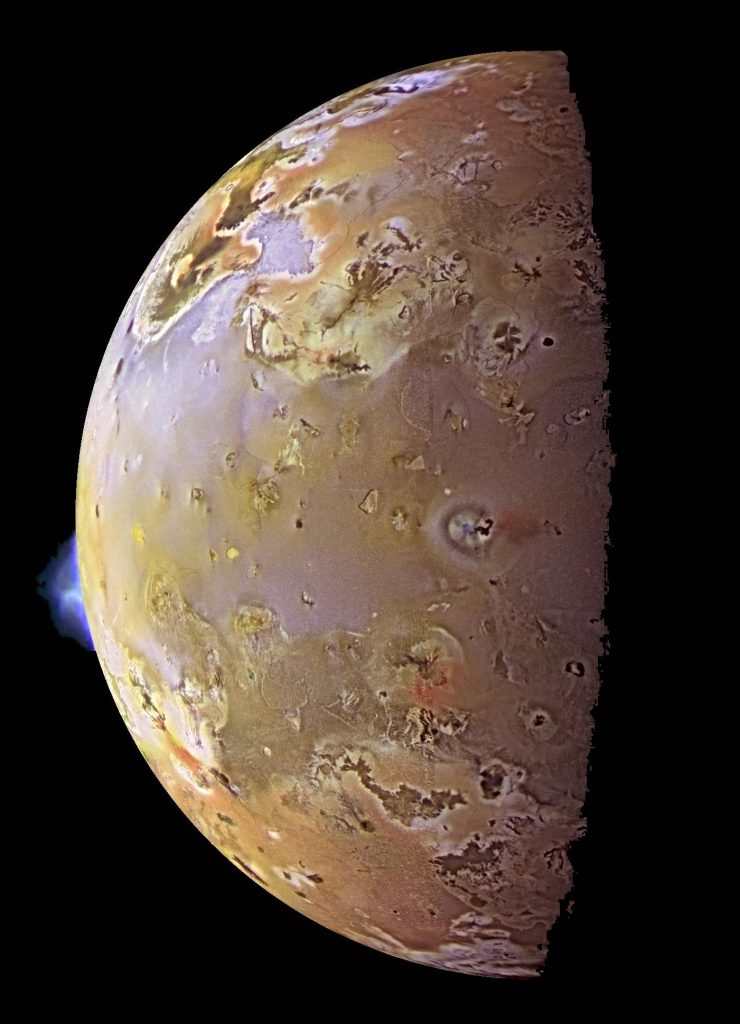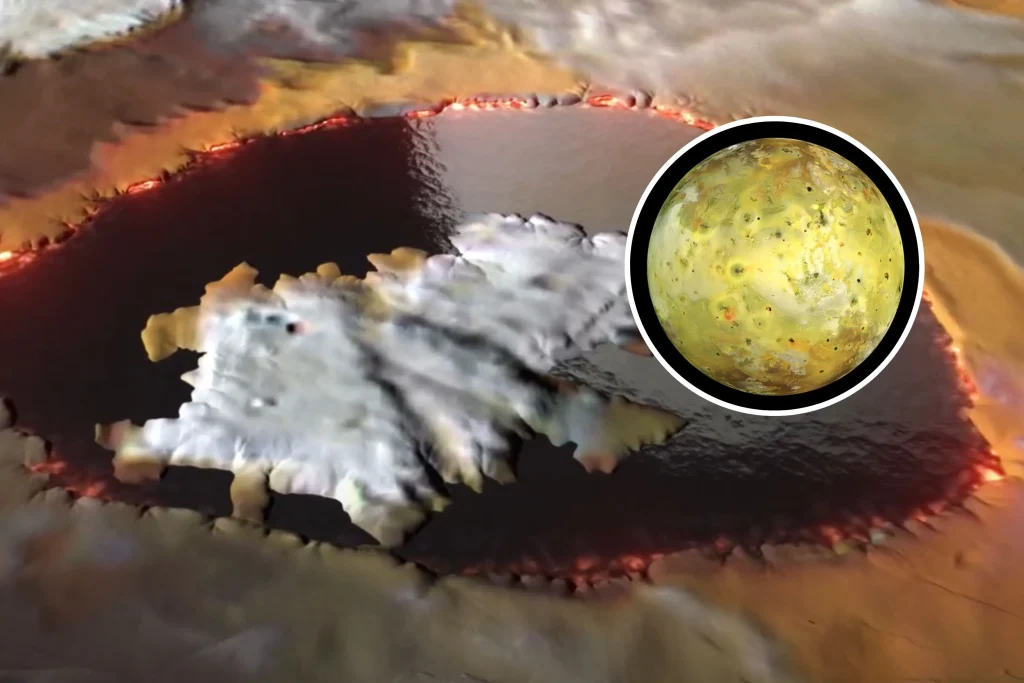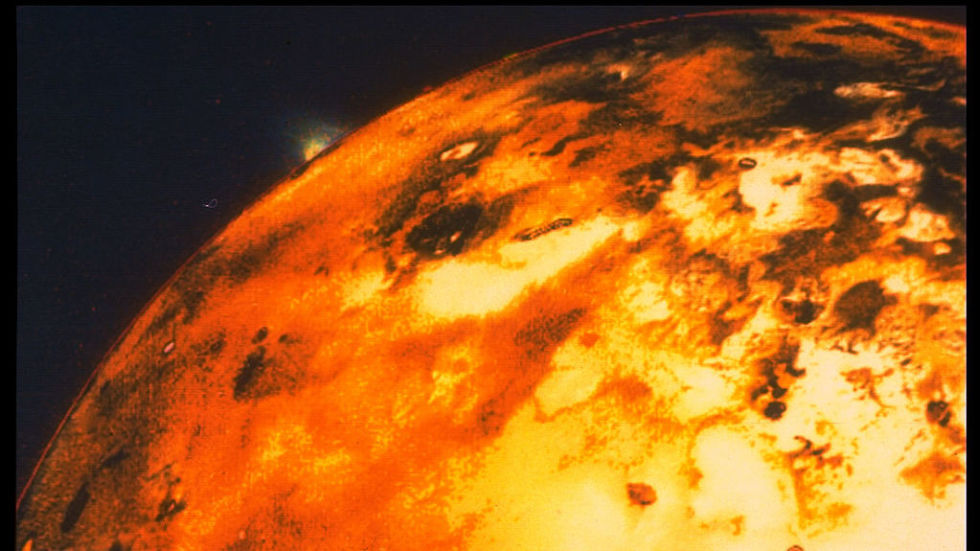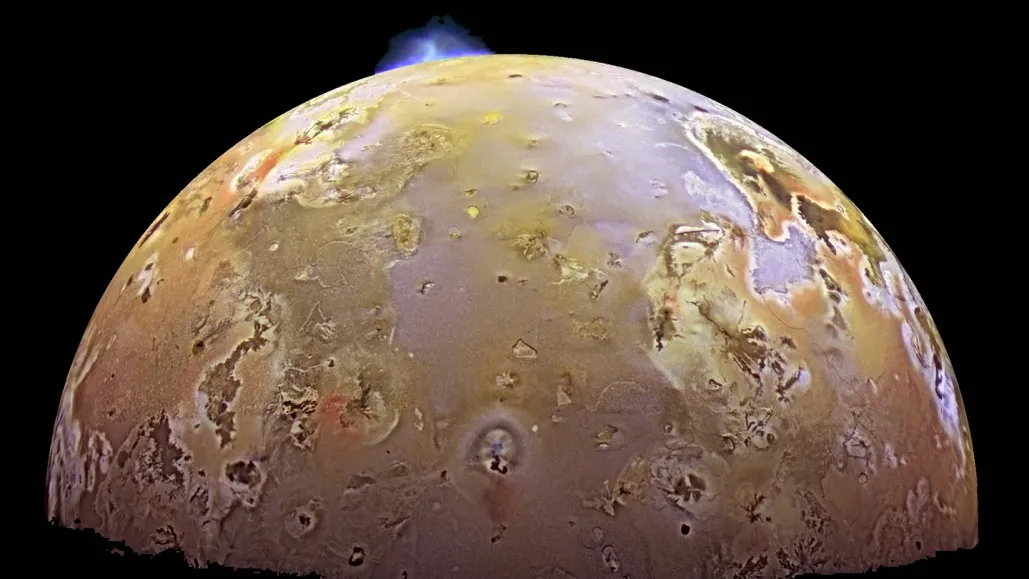Discover the extreme world of Io volcanic moon, the most volcanically active body in our solar system. Learn why Io erupts nonstop, what colors its strange surface, and how scientists study this fiery moon.
A Moon That’s Literally on Fire
Among Jupiter’s 95 known moons, one stands out as a world so intense, so violent, and so chaotic that astronomers still struggle to believe it exists. This is Io, the legendary volcanic moon whose surface is constantly reshaped by hundreds of active volcanoes—some blasting lava dozens of miles into space.
Io is not just volcanically active.
It is the most volcanically active world ever discovered — more active than Earth, Venus, or even any exoplanet we’ve observed.
At Spaceyv, where we break down space science for passionate astronomy lovers, we’ve explored many extreme planetary environments… but Io is in a class of its own.
In this in-depth guide, you’ll learn:
-
Why Io erupts nonstop
-
What gives Io its bizarre yellow, red, and black surface
-
How Jupiter’s gravity causes massive internal friction
-
Whether Io could ever support life (hint: probably not)
-
How NASA and future missions are studying the volcanic moon

Let’s dive into one of the most dangerous places in the solar system.
⭐ What Is Io? A Quick Overview
Io at a Glance
-
Type: Rocky moon
-
Parent planet: Jupiter
-
Diameter: 3,643 km (slightly larger than Earth’s Moon)
-
Atmosphere: Thin, mostly sulfur dioxide
-
Special Feature: Most volcanically active body in the solar system
While Europa and Ganymede are icy worlds, Io is a hot, molten nightmare — a place defined by lava fountains, sulfur lakes, and mountains taller than Everest.
Why Is Io So Volcanic? The Real Reason Behind the Constant Eruptions
Scientists once believed that moons were geologically dead. Io changed everything.
The reason Io erupts continuously is due to a process called tidal heating.
🌓 1. Jupiter’s Gravity Pulls Io Apart
Io orbits extremely close to Jupiter, which has immense gravitational force. This force pulls, squeezes, and stretches Io as it orbits.
Imagine bending a metal spoon back and forth — it heats up.
Io experiences this on a planetary scale.
🌗 2. Orbital Resonance Makes Things Worse
Io’s orbit is locked in a resonance with Europa and Ganymede (1:2:4 ratio).
This gravitational “dance” keeps Io’s orbit slightly elliptical.
Every orbit, Io gets:
-
Squeezed near Jupiter (more heat)
-
Released farther away (less heat)
This constant variation acts like a giant internal friction generator, melting Io’s mantle into magma.

🌋 3. Result: Nonstop Volcanic Eruptions
Because Io’s interior is always melting and pushing upward, pressure builds… and eruptions occur continuously. Some volcanoes erupt multiple times per day.
This makes Io a world in constant geological chaos — a moon literally unable to cool down.
Why Io’s Surface Has Such Strange Colors
Io is one of the most colorful objects in the solar system.
Its surface blends:
-
Bright yellow
-
Darker orange and red streaks
-
Black volcanic fields
-
White frost patches
So what creates this vibrant palette?
⭐ Sulfur Is the Main Paintbrush
When Io erupts, volcanoes spew sulfur and sulfur dioxide. As these materials cool, they settle across the surface in various forms:
-
Sulfur gas → yellow deposits
-
Hot sulfur lava → red and orange regions
-
Silicate lava flows → black areas
🌋 Volcanic Plumes Spread Colors Across the Moon
Some lava plumes reach up to 300 miles (500 km) high — tall enough to spread sulfur particles across the entire moon.
This is why Io looks like a cosmic pizza or a burnt orange planet.
🌍 How Big Are Io’s Volcanoes? Meet Loki Patera and Pele
Io isn’t just volcanic — its eruptions are enormous.
🔥 Loki Patera
The most powerful volcano in the solar system.
It brightens every few months due to massive lava lake overturns.
🟥 Pele Volcano
Known for producing giant red volcanic plumes.
Pele’s eruptions create a huge red ring around the volcano.

🌋 Eruptions Bigger Than Anything on Earth
Io’s largest volcanic eruptions release heat comparable to 10 trillion watts, dwarfing Earth’s most powerful volcanoes.
🛰️ How Do We Study Io? NASA Missions and Imaging
Io is difficult to study because Jupiter’s radiation can damage spacecraft systems. Still, several missions have captured extraordinary data.
NASA missions that studied Io:
📌 Voyager 1 & 2 (1979)
Discovered Io’s volcanoes for the first time — a scientific shock.
📌 Galileo Mission (1995–2003)
Provided the most detailed images ever of Io’s surface.
📌 Juno Mission (2016–present)
Continues to fly by Io, sending updated images and infrared data.
📌 Future Missions
NASA and ESA are discussing missions like Io Volcano Observer (IVO), which could give us unprecedented access to Io’s volcanic activity.
👽 Could Io Host Life? The Harsh Reality
Short answer: Almost certainly not.
Here’s why:
❌ Too Hot and Too Volcanic
Temperatures swing from freezing cold to molten lava.
Any potential habitat is destroyed by eruptions.
❌ Severe Radiation From Jupiter
Intense radiation belts bombard Io continuously.
Standing on Io would expose you to lethal radiation in minutes.
❌ No Stable Atmosphere or Water
Life needs stability, but Io is a world of constant destruction.
Unlike Europa or Enceladus (which may host subsurface oceans), Io is simply too unstable to support any form of biology.
Why You Can Trust This Guide
At Spaceyv, all planetary science content is based on:
-
Peer-reviewed space research
-
NASA, ESA, and JPL mission data
-
Observational science from astronomers and astrophysicists
-
Decades of combined scientific study and reporting
Spaceyv is built for astronomy lovers who want reliable, accurate, and inspiring insights into the worlds beyond Earth.
We focus on making complex science easy to understand — without losing accuracy.
Conclusion: Io Is the Solar System’s Ultimate Fire World
The Io volcanic moon is one of the most extreme and fascinating places ever discovered. From nonstop eruptions to the violent power of tidal heating, Io is a world shaped by cosmic forces unlike anything on Earth.
Its fiery personality makes it:
-
A natural laboratory for studying planetary geology
-
A key object in understanding Jupiter’s system
-
A dramatic reminder of how diverse our solar system truly is
If you love astronomy, cosmic mysteries, and exploration, Spaceyv is your trusted home for the universe’s most astonishing stories — including this volcanic masterpiece orbiting Jupiter.



